Features and types of bottle siphons

Each residential or non-residential premises, where there is a sink and sink, are equipped with siphons. Progress does not stand still, therefore, at the present time, the craftsmen already have several types of this product at their disposal, differing in design and materials used.
Views
By design, siphons are as follows.
- Pipe - the very first design. It is a curved snake-shaped tube.
- Corrugated - analogue of pipe. Instead of a pipe, a corrugated pipe is used here, which increases the elasticity of the structure and reduces the service life.
- Bottle - the most reliable in operation.
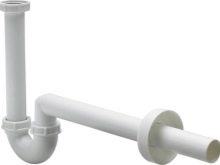
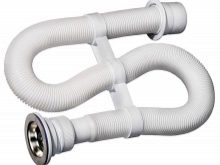
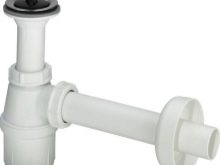
- Dry - a modern type of siphon, which is a piece of pipe with a built-in plastic membrane. In fact, this is the result of nanotechnology.
- Flat - designed for places with rare water use, because it has a limited capacity.
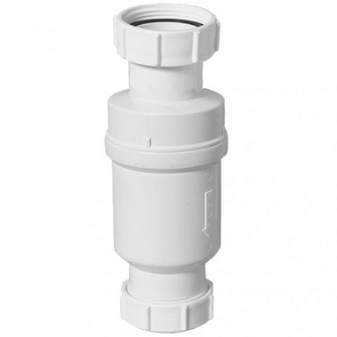
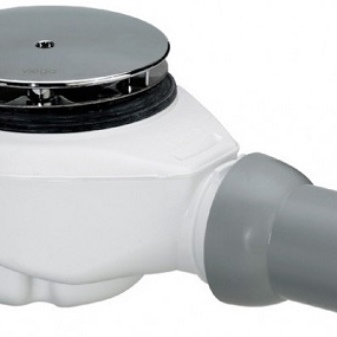
Design and dimensions
The bottle siphon, its varieties and modifications, is most in demand on the market among ordinary buyers. It won its popularity by its ease of operation and the most simple design. Installing such a siphon is not difficult even for the most ignorant person in plumbing matters. Ease of installation lies in the simplicity of the design. As the name suggests, this siphon is shaped like a bottle. Another name for it is flask, since the siphon mechanism itself is located inside the flask. To understand the principle of operation of the unified bottle siphon (SBU), consider what it consists of.
In the upper part there is a branch pipe for connecting to a washbasin. Usually it is a small piece of pipe with a diameter of 32 mm and a length of 120-150 mm with two nuts at the ends. Lower nut with gasket. The upper nut connects the pipe to the washbasin, and the lower one connects to the siphon reservoir.
The reservoir consists of two halves connected by a threaded joint.
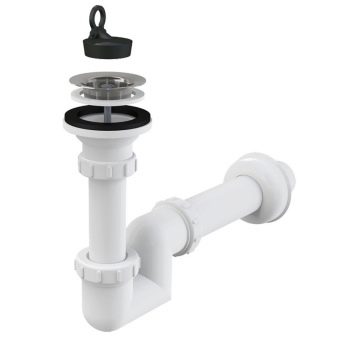
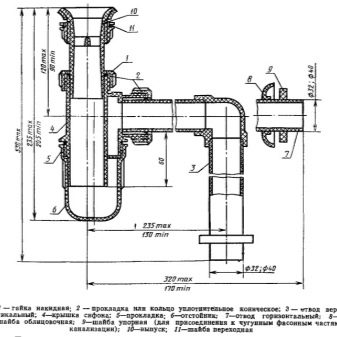
The upper half is in the shape of a bowl with a 32 mm diameter pipe embedded in the center. The pipe runs through the entire upper bowl and descends into the lower bowl of the sump. When assembled, a gap of 3-5 mm should remain between the pipe and the bottom of the lower bowl. This is necessary for the flow of waste water. There is a drain at the top of the tank that does not connect to the central pipe of the upper bowl.
The drain through the threaded connection is secured to the outlet by means of a nut and a sealing gasket. This branch pipe is connected to the sewerage system. You can connect it with a corrugated pipe or polypropylene sewer pipe. The sizes of bottle siphons are quite acceptable and convenient for installation. They vary in height from 130 to 180 mm. The siphon reservoir or flask has a diameter in the range of 80-100 mm. The length of the bend can also be varied from 100 to 180 mm.


Materials (edit)
According to the materials from which bottle siphons are made, they are divided into two types: plastic and brass. The latter are much more expensive, but they will also last much longer than plastic ones. Polymer materials are short-lived when exposed to water and different temperatures. Therefore, the brass siphon is also called unified. Plastic siphons are most often white, and brass siphons are chrome plated so that they do not oxidize. Therefore, most often they have a steel color.
By design, they are divided into classic, with overflow, with two bowls and with an additional drain. We examined the device of the classic bottle siphon above, other types differ slightly from it.The siphon with additional drain or vertical outlet is the same classic bottle siphon. The only difference is in the connection pipes to the washbasin. In this model, there is another drain in it for connecting a washing machine. The drain is made at an angle of 45 degrees upwards. This prevents drainage water from the washbasin from entering the washing machine tub.

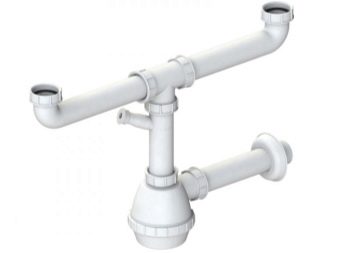
The bottle siphon with a unified outlet (SBUV) with two bowls is also a classic model with a single modified connection pipe. This part in this model is made in the form of a T-shaped connection with a common outlet. In the upper part, the branch pipe is connected to two washbasins, and in the lower part it converges into the siphon reservoir. This design is small and saves effort and money during installation and does not take up much space.
The overflow siphon is another kind of classic. It also differs in the upper part of the connection pipe. Here, with the help of a corrugated pipe, an additional drain is connected, the upper part of which is mounted on the side of the sink.
When the water level reaches this drain, the water will simply flow into the siphon, so no flood will happen.
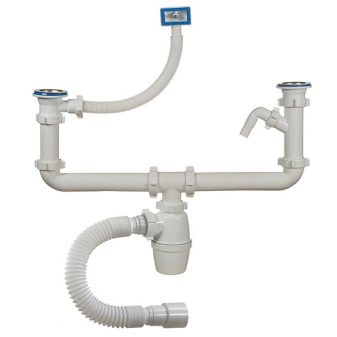
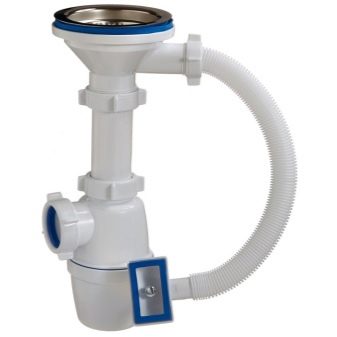
How to choose?
When choosing a bottle siphon, the question inevitably arises - which is better: plastic or brass? Choosing a plastic one, you can save on purchase and lose in quality. Such models are short-lived, temperature differences and dirty water will do their job. The plastic will tarnish, become brittle and at some point will begin to leak water. The only plus of such models is the low price compared to brass ones.
If you have chosen a model made of brass, then you can forget about leaks and water leaks in the sink for a long time. Brass alloy does not corrode or rust, it is inert towards water and temperature differences. In addition, the stylish design of such a product will give your room an extra chic and fashionable look. The only drawback of the brass siphon is the high price, but it's worth it.
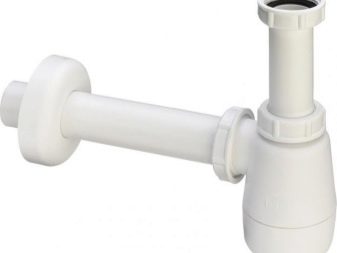

Regardless of which model you choose (plastic or brass), the bottle siphon still has a huge advantage over other designs.
- Multifunctionality in use. Possibility to connect several units to one device. For example, in a kitchen, two sinks, a washing machine and a dishwasher can be mounted to one product.
- Thanks to its versatile dimensions it fits all models of washbasins, sinks, sinks. Even in a model like the Tulip, it fits easily.
- Due to its uniformity if one element of the model breaks down, it can be easily replaced without replacing the entire siphon. All elements of the model are easy to change and do not require complete dismantling of the structure.
- Having a removable sump bowl, you can easily carry out maintenance of this siphon and easily remove accumulated dirt and grease residues from it. Even if you accidentally dropped your favorite piece of jewelry into the sink, it won't go anywhere. It just remains at the bottom of the sump, from where you can easily remove it.
- The ease of installation simply captivates with its simplicity. This model can be assembled and installed almost effortlessly.
- The design of this model is such that the collection of dirt and grease residues does not clog the main wastewater passages. Timely maintenance will only increase the life of the product.
- Pricing policy of this model corresponds to the quality and performance properties.
- Applied materials and neat stylish design do not spoil the general appearance of the room, and in some cases emphasize its originality and complement the interior.
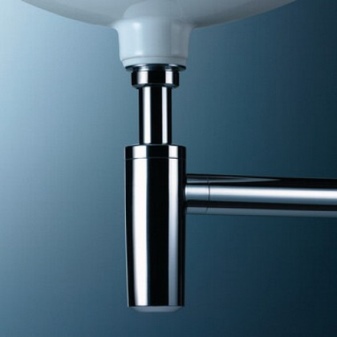
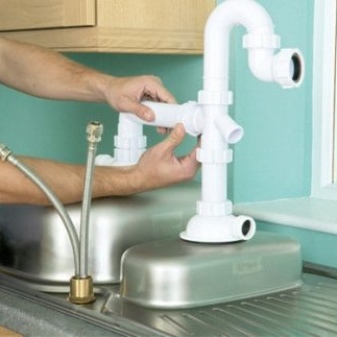
In the next video, you will see the assembly of the A 3202 bottle siphon.













The comment was sent successfully.